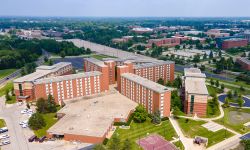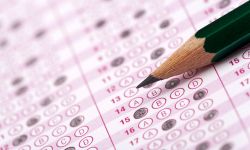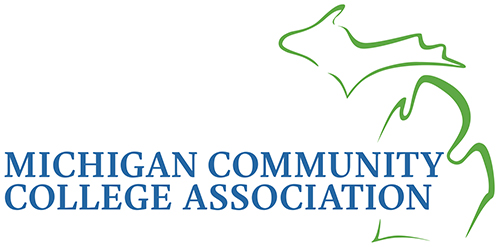In debt and in limbo: Uncertain times for student-loan borrowers in Michigan

- Federal student loan borrowers face a slew of changes on payment plans and possibility of forgiveness
- A court ruling affects aspects of income-driven payment plans that allow borrowers to lower their monthly payments
- Borrowers tell Bridge they are nervous and taking a wait-and-see approach
MELVINDALE — When Kelly Young-Raymore thinks about her federal student loans, she feels “nauseous.”
“I owe a lot of money and it feels like I’ll probably never be able to pay it off,” she told Bridge Michigan.
The high school teacher is among millions of borrowers navigating a steady stream of government policy changes and court decisions affecting student loans in recent years.
They include government approved payment pauses; Democratic Party-backed efforts to forgive loans and Republican-backed court challenges on these plans, court actions putting the brakes on features of loan repayment plans and a budget debate about the future of a Biden-backed loan payment plan.
All this has left many borrowers in limbo, unsure of the future of loan forgiveness and waiting to get clarity on what repayment plans will look like moving forward. Plus, millions may be on their way to defaulting on their loans, which has severe financial consequences.
Here’s what we know.
Recent political developments have introduced new complications.
President Donald Trump issued an executive order last month aimed at limiting who can qualify for Public Service Loan Forgiveness, a bipartisan program created in 2007 that rewards government and nonprofit workers with loan forgiveness after 10 years of loan payments.
Adding to the uncertainty, the Department of Education, which manages the federal government’s student loan portfolio, has been cut in roughly half and advocates say it’s hard for borrowers to get answers.
Related:
- Michigan education officials may have overstated impact of Trump fund freeze
- U-M halts DEI plans as Trump administration takes aim at diversity efforts
- Trump orders end to Department of Education. What it means for Michigan
Trump has also said he wants to move oversight of the $1.7 trillion student loan portfolio to the Small Business Administration.
“There’s not a lot of clarity on what the stuff is,” Young-Raymore said. “So I don’t know if it’s actually impacting my ability to pay. What I will say is that it causes anxiety in the sense that I don’t know if all of a sudden I’m going to get like this balloon payment almost like I'm on some type of adjustable-rate mortgage, because some people have said that that’s what they have experienced.”
It’s a lot to keep track of.
“The system has been in chaos, and it has been in chaos for a very long time,” said Persis Yu, deputy executive director and managing counsel for the Student Borrower Protection Center, an advocacy and research group focused on student loan borrowers.
So, how did we get here?
It started in the early days of the COVID-19 pandemic, during the first Trump administration, when the government agreed to pause repayments on student loans. The pause, first implemented in March 2020, was extended numerous times, giving borrowers relief from payments through the summer of 2023.
Meanwhile, President Joe Biden proposed a plan to forgive up to $20,000 in loans for borrowers in August 2022.
After losing in the US Supreme Court in June 2023, Biden told borrowers he would not stop fighting for loan forgiveness. Almost immediately, he put forth the Saving on a Valuable Education (SAVE) plan, an income-driven repayment program that replaced an old plan and accelerated the timeline for borrowers to get their loans forgiven after making several years of payments.
Income-driven repayment plans (and possible forgiveness) hit a roadblock
Court decisions over the last year have blocked portions of SAVE and then SAVE in its entirety. A February 2025 ruling also placed limits on other income-driven repayment programs and prompted the Education Department to pause online applications for them.
These programs set a borrower’s monthly payment amount based on the borrower’s income. After making payments for a certain number of years, borrowers are eligible to get the remaining balance of their loans forgiven.
Income-driven repayment plans can help lower a borrower’s monthly payment and help them avoid default, Yu said.
“Without that availability, and without people actually being able to get into the programs, they don't have that certainty. And of course, the chaos is always present as well.”
In late March, the administration announced it had re-opened online applications to the other income-driven repayment programs. It said borrowers were welcome to apply for the Income-Based Repayment (IBR) plan, which was created by Congress, and two other plans — Pay As You Earn (PAYE), and Income-Contingent Repayment (ICR).
It’s unclear when the government will turn on the processing of these applications, Yu said.
Online applications for SAVE, however, remain paused.
As for loan forgiveness, the Education Department is not processing it for payments plans that were created by the department but it says it “can and will still process loan forgiveness” through the Income-Based Repayment (IBR) plan.
So where do things stand now? In a word: Uncertainty.
Borrowers are saying they are on hold for hours with student loan servicers and at times, servicers are giving incorrect information, Yu said.
Those already enrolled in the SAVE plan are in "general forbearance” where they don’t have payments due and they aren’t accruing interest. But there’s a big drawback. Loan forgiveness programs kick in after borrowers make a certain number of payments, and time spent in forbearance doesn’t count toward that, according to the student financial aid website.
“I’m not making payments but I’m also not optimistic about the future of the SAVE program or even the future of Public Service Loan Forgiveness as a whole,” said Jordan Weinstein, a teacher in Detroit.
Weinstein said her decision to take on debt for grad school was influenced by the possibility of getting loan forgiveness.
Eight million people had enrolled in the SAVE program before it was paused.
How much in loans do Michigan borrowers owe?
There are roughly 1.4 million federal student loan borrowers in the state with an average of nearly $37,000 per borrower, according to the Education Data Initiative.
Interest rates vary depending on the loan type and when it was taken out.
At Michigan’s 15 public universities, students who received federal aid have median annual salaries of between $49,757 and $85,800 five years after graduating, depending on the school, according to a previous Bridge analysis of US Department of Education College Scorecard data.
Median federal student loan debt, meanwhile, ranges between $19,500 and $27,000 for public university students, suggesting higher earnings could potentially offset those debts within a handful of years.
The consequences of missing loan payments
After the Supreme Court struck down Biden’s student loan forgiveness plan in 2023, Biden told borrowers there would be a 12-month grace period where payments were still due but the federal government did not report borrowers as “delinquent” if they missed payments. Those protections ended September 2024.
Not paying back your federal student loans can have large consequences. borrowers can face negative credit reporting and garnishment of wages or tax refunds.
NPR reports that 9 million borrowers may be on their way to loan default, citing internal US Department of Education data.
The future of forgiveness
Mikal Doke is enrolled in the SAVE plan, meaning that her required student loan payments are calculated based on her income. For a while, her required payments have been $0 a month, she said.
As a teacher, she would qualify for federal Public Service Loan Forgiveness, where a borrower makes payments for 10 years of working in public service and then gets their remaining amount forgiven.
Doke is only one or two months away from meeting that threshold.
“When I called and tried to make a payment, they said no it’s in forbearance, you cannot do anything,’” Doke said. “It’s essentially untouchable.”
Doke said getting her public loans cancelled affects other aspects of her life too. She’ll have less debt, meaning it will be easier to get a lender to support a loan to fix the chimney in her home and it will be easier for her to consolidate her private student loans as well.
“I am anxious. And trying everything I can to get the last payment or two because I’m afraid that with the new administration, that maybe the student loan forgiveness is going to disappear or something will change drastically.”
Where can borrowers go for help?
Yu said her organization is urging borrowers to contact their congresspeople given the upheavals happening at the Department of Education and the Consumer Financial Protection Bureau, an agency the Trump administration has attempted to dismantle.
Trump has said the student loan portfolio will be moved to the Small Business Administration but it’s unclear if that will have Congress’ support.
Are you a Michigan public school employee? State could help you make payments.
Michigan has a program to help public school employees pay back their federal student loans. The program provides up to $400 a month for a borrower’s loans.
Employees must work 32 hours or more a week at a school district and spend at least half of their time working directly with students to qualify for the loans.
Generally, public school employees may qualify for federal Teacher Loan Forgiveness or Public Service Loan Forgiveness. Both programs require borrowers to make a certain number of payments before being eligible for loan forgiveness.
Individual colleges may offer their own student loan support for students. The state offers programs grants to help future teachers go to college or help train current school employees to become certified teachers.
At Eastern Michigan University, the school is offering to help repay student loans for EMU students who study K-12, elementary or secondary education through the EMU Educator Promise. The program will EMU graduates pay for their loans if they make less than $50,000 when they graduate.
Michigan Education Watch
Michigan Education Watch is made possible by generous financial support from:
Subscribe to Michigan Education Watch
See what new members are saying about why they donated to Bridge Michigan:
- “In order for this information to be accurate and unbiased it must be underwritten by its readers, not by special interests.” - Larry S.
- “Not many other media sources report on the topics Bridge does.” - Susan B.
- “Your journalism is outstanding and rare these days.” - Mark S.
If you want to ensure the future of nonpartisan, nonprofit Michigan journalism, please become a member today. You, too, will be asked why you donated and maybe we'll feature your quote next time!






